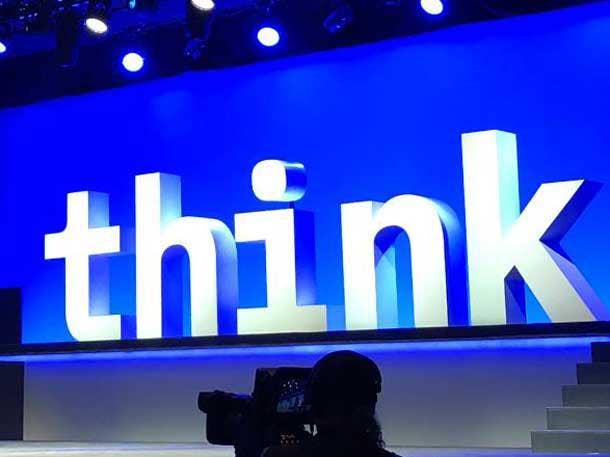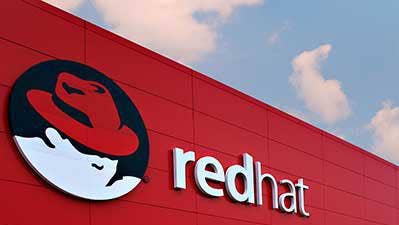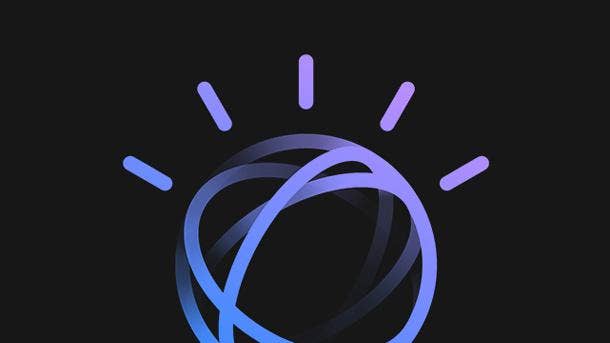10 Things We Learned About IBM's Channel At Think 2019

Talking To Teltsch
John Teltsch was a 36-year IBM veteran when he took over Big Blue's channel chief position in June of 2017. Even though Teltsch had plenty of exposure to IBM's channel over those decades, when he became general manager of global business partners he realized there was much he still didn't know.
The new channel chief quickly saw the necessity of a generational overhaul of the IBM PartnerWorld program to adapt to the realities of the cloud era and the rapidly changing nature of the channel itself.
At the PartnerWorld kickoff for the IBM Think 2019 conference in San Francisco, Teltsch spoke candidly with CRN about the changes he's made since then, which of them have worked and which haven't, and what's left to be done to maximize partner success.
Two program revamps—in October of 2017 and April of 2018—are now "in full execution." And IBM has learned a lot in the last year after those "aggressive changes," he told CRN.
In that time, IBM has added some 13,000 new partners—a record year. Many of them are not traditional resellers, but instead focus on services, IP, embed, or industry-based solutions. IBM has also "exited fulfillment partners from our channel strategy," he said.
"We made some changes that weren't necessarily the right changes. I'm going to change those. We're going to pivot," he said. But what's clear is "we're on the right path."

Irrelevant Silos
IBM categorizes partners into eight distinct types. Previously, each group had its own incentives, rebates, enablement programs, and engagement methods. Those distinctions, and their resulting complexity, didn't make much sense for the modern channel.
"The partner is a partner. They're part of an ecosystem," Teltsch (pictured) told CRN, regardless of whether they see themselves as primarily resellers, software embedders, systems integrators, ISVs or managed services providers.
Because channel silos are increasingly irrelevant, Teltsch and his team have been focused on breaking them down and standardizing the program across partner types.

What's In A Name?
A nomenclature change went largely unnoticed last year outside of IBM's channel organization—just as it was intended to.
But internally, IBM stopped using the term IBM Global Business Partner Organization when talking broadly about its channel, and instead adopted the pithier IBM Partner Ecosystem.
The change was intended to shift his team from thinking along the lines of different partner categories, Teltsch said.
"I'm trying to eliminate the partner types inside our company. The partner's a partner, they're part of an ecosystem, they can do resell, they can do embed," he told CRN.
"We have to continue to build and work on this federated ecosystem inside the company."

Axing Direct Reports
After taking the channel chief position, Teltsch initiated a major shakeup of IBM staff within the PartnerWorld organization. New blood was needed to drive changes, he said in a fireside chat with members of the media.
Over the last year, IBM's channel chief has removed 85 percent of the people who directly reported to him.
"Inside IBM," Teltsch said, "we had too many people in the channel too long."

The 800 Largest
In January of 2018, Teltch signaled that IBM would "double-down with its professional services organization" on about 800 largest accounts.
That meant Big Blue would lead direct for those "industry" customers—if partners wanted to sell professional services to them, they wouldn't see much in the way of incentives.
At the same time, partners were encouraged to invest in practices targeting the next two strata of customers: enterprise and commercial.
"We're going to increase incentives if you invest there," he told partners in regard to smaller enterprise and mid-market customers—a base that is seeing significant year-over-year growth across hardware, software and services.
Teltsch also conceded that the shift at first wasn't executed well.
"I over-rotated," he said. "I took too much out of renewals in some our largest accounts." That was "very painful" for some in the channel used to selling to those customers.
The over-rotation was later corrected, he said, upon input from his partner advisory council.

Listening To Partners
"Be clear to your partners where you want them to invest and play," was the first of many pieces of advice Teltsch said he received from IBM's partner advisory council.
That has proven a crucial principle in avoiding channel conflict, he said. IBM's massive channel transformation has been most successful when there's been clarity.
"We have such a more-positive relationship to the channel than we did two years ago because we're actually listening," he told CRN.
In addition to clarity and simplification, partners made clear they wanted financial recognition for generating new opportunities and implementing high-value, differentiated solutions.
"I want to stabilize the channel. I want to be consistent. I want to be transparent. I want them to understand why we're making a change and what the impact is going to be," Teltsch told CRN.

(Not) Preparing For Red Hat
IBM is legally restricted from many activities in preparation for the largest tech merger of years.
At some point, two massive channels will have to meld. But until the deal goes through, the SEC doesn't look favorably on coordination.
IBM can't talk directly to Red Hat, but it can get a feel for its channel dynamics by talking to its joint partners.
Last week, Teltsch appointed North American Channel Leader Dorothy Copeland to the Red Hat Synergy Team led by Steve Robinson, commencing some channel preparation that entirely relies on publicly available information.
Copeland will lead "channel synergy" over the next six months. Because she recently came from AWS, she brings a fresh perspective and is "not completely blue-washed," Teltsch said.
Beyond that, Boston Consulting Group is handling merger preparation, implementing a "clean room concept" in obtaining information about Red Hat and IBM partners and keeping them "separated by a firewall," Teltsch said.
"You're not going to see us take the IBM channel and the Red Hat channel and crush them together immediately" Teltsch said. "We'll bring Red Hat into the conversation when it's legal for us to have a joint conversation."

Deal Registration Incumbency Protections
Teltsch recently implemented deal registration programs for resellers across IBM's software portfolio, giving preferred discounts to partners that identify opportunities in the market.
The Software-as-a-Service program debuted last year, and one for on-prem software just three weeks ago.
"Implementing deal registration protects our partners and protects incumbency," he said.
With deal registration, partners are less likely to be undercut by a rival on an existing account.
"Our incentives our going to change mid-year to focus more on incumbency," Teltsch said.

Net Promoter Score Stumbles
When Teltsch became channel chief, he wanted to implement a Net Promoter Score evaluation system, using the Medallia platform, to assess how well partners were serving IBM customers.
But implementation hit some stumbles, he admits.
"We had two false starts," he told CRN.
In January of 2018, he rolled out the plan—one that asked for IBM to directly talk to its partners' customers.
In short, "none of our partners supported this."
Later, GDPR rules in Europe that implemented greater privacy restrictions dealt the plan another blow.
Undeterred, Teltsch and his team adjusted the program to directly engage partners across 72 countries, rather than bypassing them and going straight to their customers.
"It's really the guiding light now for our future changes," he said.

Watson Is Automating Deal Approvals
"One of the big pushes right now is continuing to automate and simplify our incentives and our benefits," Teltsch told CRN.
And IBM is eating its own dogfood in that regard—or at least applying its Watson cognitive solution to green-light approvals.
A high percentage of software sales had to go through a special bidding process, which required IBM managers to approve those deals—a system that was slow and antiquated.
Now Watson's artificial intelligence is being applied to deliver specialized pricing.

A Seismic Shift In Enablement
When Teltsch took over IBM's channel leadership, he was surprised to see how much partner enablement efforts had become forked across brands.
That led to an initiative to implement consistency across partner business models and the products they specialized in bringing to market.
Teltsch said he went out and purchased 90,000 seats from Seismic to use its channel-enablement tool, then gave every reseller their own account.